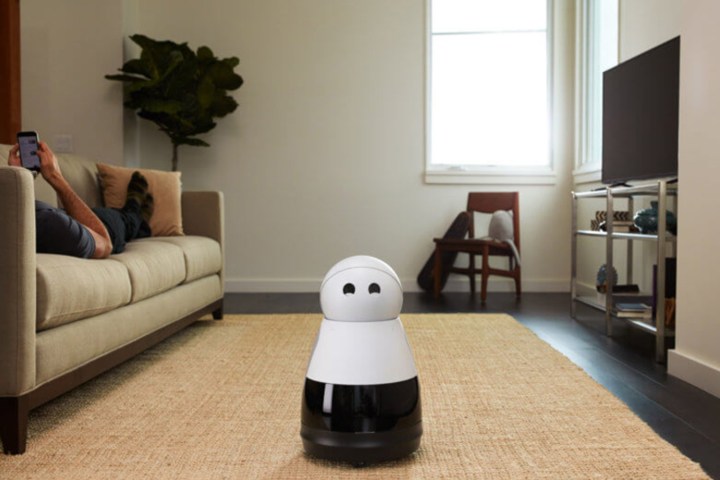
For the uninitiated, Kuri is a home robot that is 20 inches tall and 12 inches wide, and that was unveiled by Mayfield Robotics at the Consumer Electronics Show. It’s packed to the brim with technologies like asynchronous motors, a capacitive touch sensor, microphones, speakers, and an HD camera, and has a personality that’s warmer than your average robot. It reacts when you call its name, and it emotes when you tell it to perform a task.
In an update, Kuri is gaining the ability to recognize new phrases. Tell the little robot companion “I love you” and it will respond with an “I love you, too” dance and light show. If you tell it to “go to sleep,” it will close his eyes and enter a low-power mode until you wake it up.
Kuri is also getting better at recognizing sounds and people. Now, when it sees a familiar face, it will react with a “smile,” and follow the person around the room with its eyes.
Those aren’t the only improvements. A redesigned speaker enclosure boasts improved acoustics, and re-engineered convex-shaped eyes “[help] Kuri to appear even more lifelike” by reflecting light more naturally. And last but not least, a formalized partnership with internet rules engine IFTTT will help the robot interact with smart home appliances and devices.
“It’s a big step forward in making Kuri really act alive in ways that are responding to you, and it feels really warm and friendly when you see it in person,” a Kuri spokesperson said.
That’s in keeping with the company’s goal — to create a lifelike robot with a sense of empathy. “It doesn’t feel like a robot in the traditional sense,” Chris Matthews, Mayfield’s vice president of marketing, told Digital Trends in November. “It connects to people in a different way than normal tech — it’s very much about what people feel.”
Kuri is on a yearlong development track that is already seeing the robot’s software and hardware improve. “We want to ship a complete product — one that’s useful for everyone,” Matthews said. “We want to build robots that are joyful, useful, and inspiring … [and] we’re working hard to make sure that we’re hitting on those three chords.”
Kuri is available for pre-order at HeyKuri.com with a $100 deposit. It will retail for $700 next year, and ship with a dedicated charging dock.


